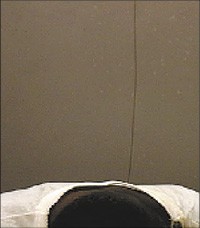Treed
I read with wholehearted agreement Ethan Gilsdorf’s article (“Made in the Shade”) on urban trees in your August 17th issue. Wouldn’t it be great to have the benefits of shady streets and sidewalks during the oppressive heat in Memphis during July and August? When I drive past the wooded area of Overton Park on North Parkway, the outside temperature feels at least 10 degrees cooler.
Unfortunately, my same drive takes me down Sam Cooper Boulevard, and I cringe at the pitiful effort put forth by our city to establish oak trees. Two years ago, dozens of unplanted oak trees were left out for two weeks before they were finally planted in May, only to have most turn brown and die in the early summer. This year, dozens more oak trees were more appropriately planted in late winter/early spring, only to suffer a similar fate from lack of watering. Some of those trees that appeared to be surviving were cracked off at their trunks by overzealous mowing tractors.
Thousands of dollars for trees and planting — nary a nickel for responsible maintenance. Where is the City Beautiful Commission when you need them? I bet there are business or civic groups that would be willing to sponsor urban reforesting in Memphis, if it were felt their efforts would not be thwarted by those responsible for maintaining our green spaces.
Ray M. Allen Jr.
Memphis
Biodiesel a Fantasy?
It is apparent that Harold Ford Jr. has great political ambitions, and it is also indisputable that he is very articulate. However, I question his understanding of economics as it pertains to agriculture. In “support” of our farmers here in Tennessee, he has a commercial in which he touts the promising future of biodiesel produced from soybeans. He says he is the man to get it done.
Sounds good, but he either ignores or is ignorant of the various supplies of oil crudes still available in North America. Biodiesel will probably survive as long as crude hovers around $70 or above. If it drops below that, then the biofuels industry is in trouble unless heavily subsidized by the federal government at the cost of the taxpayer.
Americans use 129 million gallons of diesel and 382 million gallons of gasoline a day. It is hard to predict, but biodiesel and ethanol-related crops might provide raw materials for maybe between 15 million and 25 million gallons of fuel a year in Tennessee. In a real-world scenario, we would be looking at providing maybe one third of the state’s diesel demand. It would take the state between 10 and 20 years to meet these production levels.
In the Northwestern states there is enough oil shale to provide diesel and gasoline for the next 100 years at between $30 and $40 per barrel. It is very unlikely that either biodiesel or ethanol can compete with $40-per-barrel oil. I can see the farmers in Tennessee being led into investing millions to produce a commodity that has no real future in the volumes and prices Ford would like to lead them to believe exists.
Earl Barnett
Speedwell, Tennessee
Draft the
President’s Kids
I am a white, middle-class suburbanite. I attended a top-20 university, and my kids go to private school. I am probably similar to many people in that I don’t know anyone who has served in Iraq. “So what?” you might say. “I don’t care who you know or don’t know.” But I believe that my not knowing who’s served in Iraq is indicative of a truth far too many of us ignore: It’s not our war. It’s a war being fought by the lower economic class. It doesn’t affect us. We are not even inconvenienced by it.
Why was President Bush so willing to send our young people off to fight and die? Because he doesn’t know them either. They are not his friends or children’s friends or his relatives or neighbors. He makes occasional visits with relatives of soldiers for an obligatory 10 or 15 minutes, then goes back to his life. A life in which his corporate friends are happy, the oil industry is booming, and his children are safe.
So I am proposing a new constitutional amendment, one that makes a whole hell of a lot more sense than banning gay marriage: I believe that any leader who commits our nation to war should be required to send his own children first. Lincoln’s son served in the Union Army. All four of Roosevelt’s sons fought during World War II. Those Bush girls ought to be over in Iraq right now, living on MREs and two bottles of water a day. Can’t you just imagine their postcards home?
Lisa Jackson
Memphis




 Greg Cravens
Greg Cravens